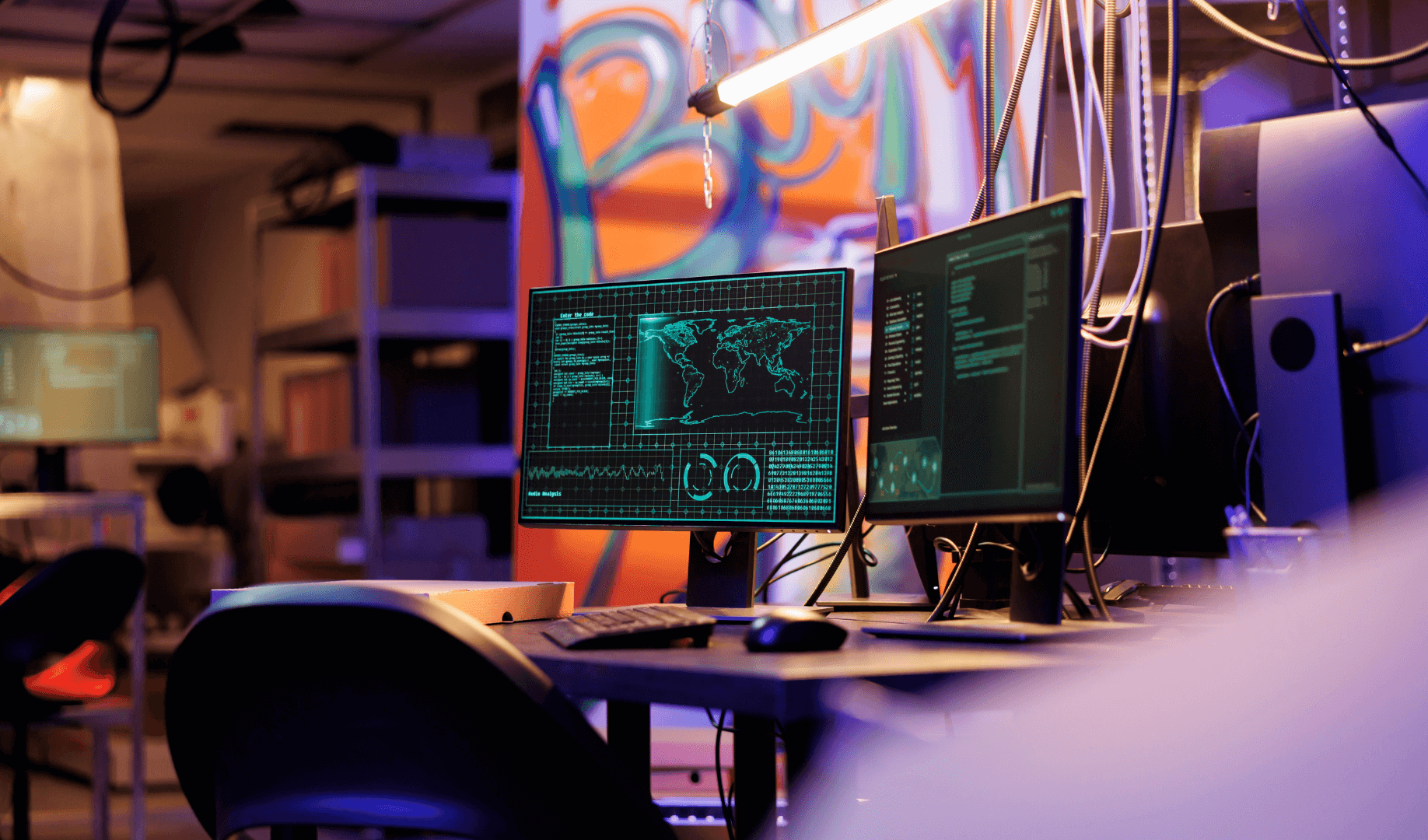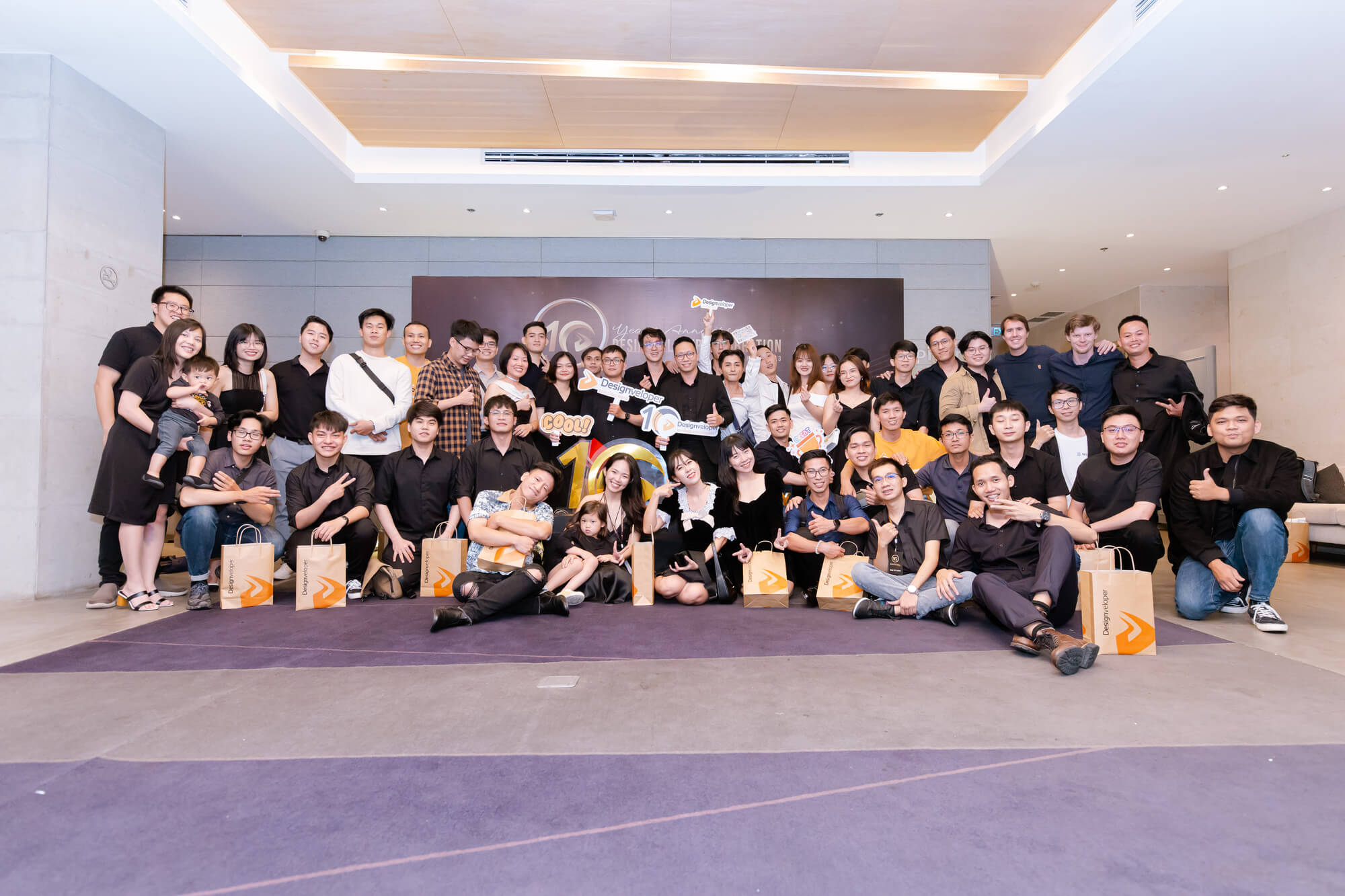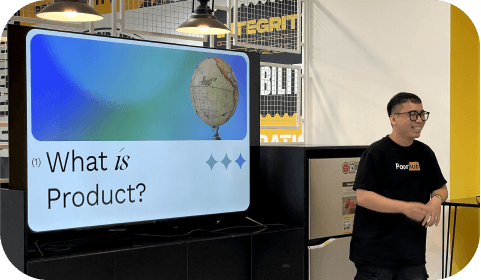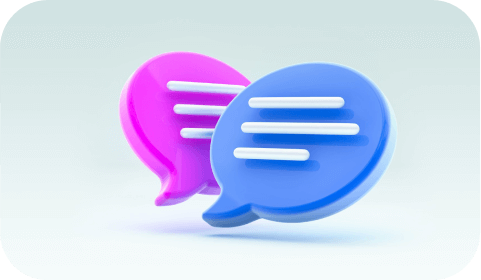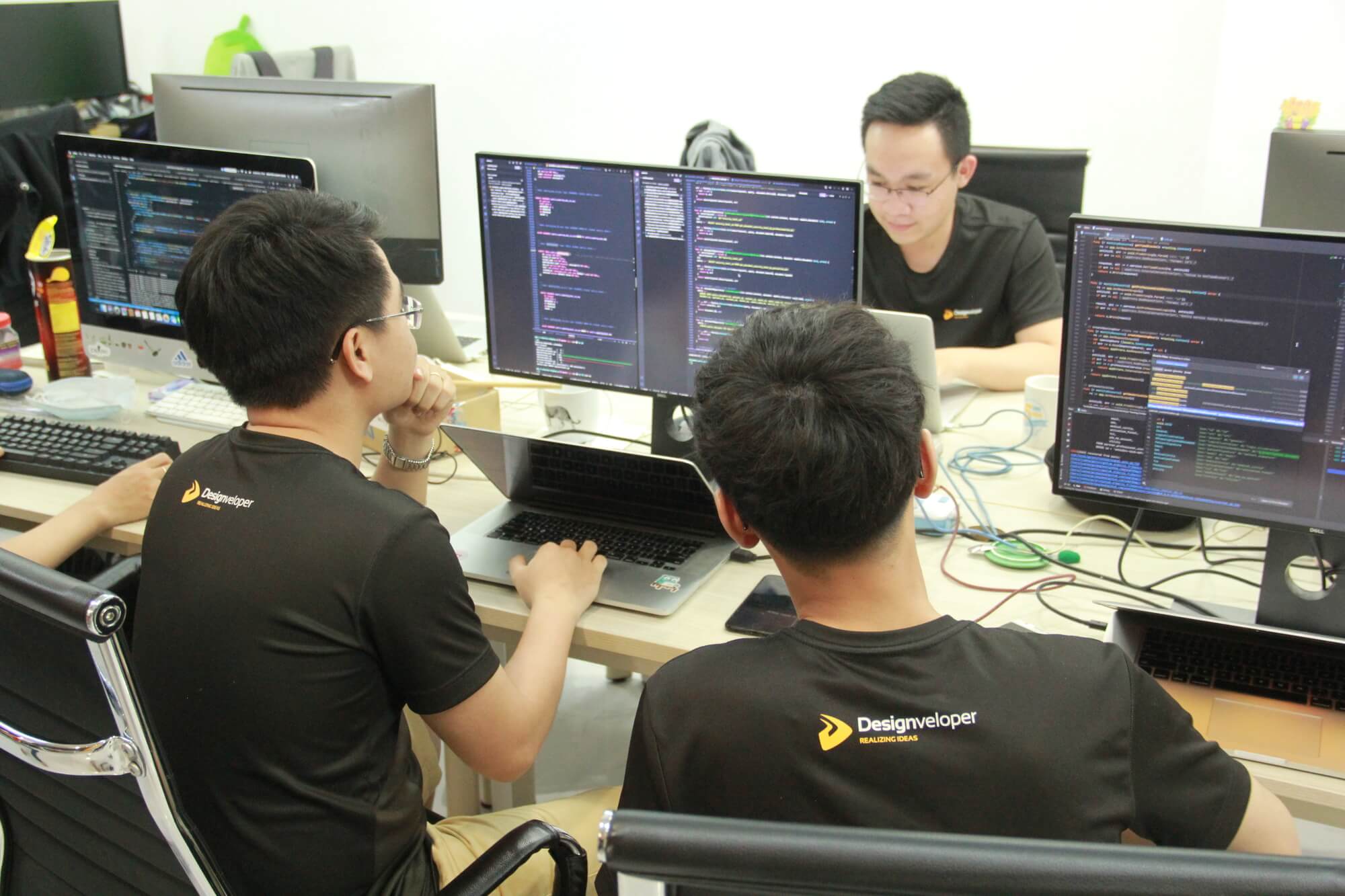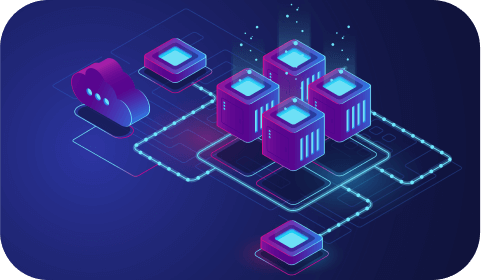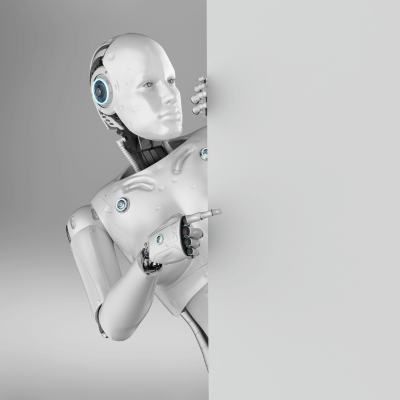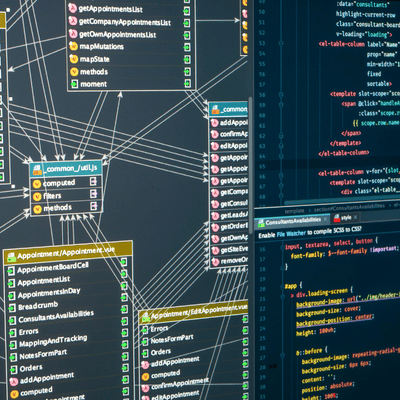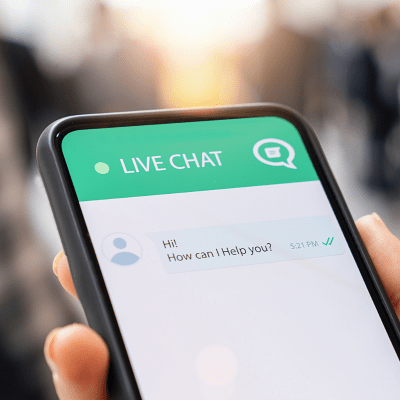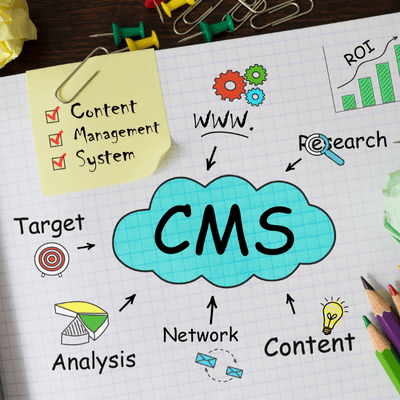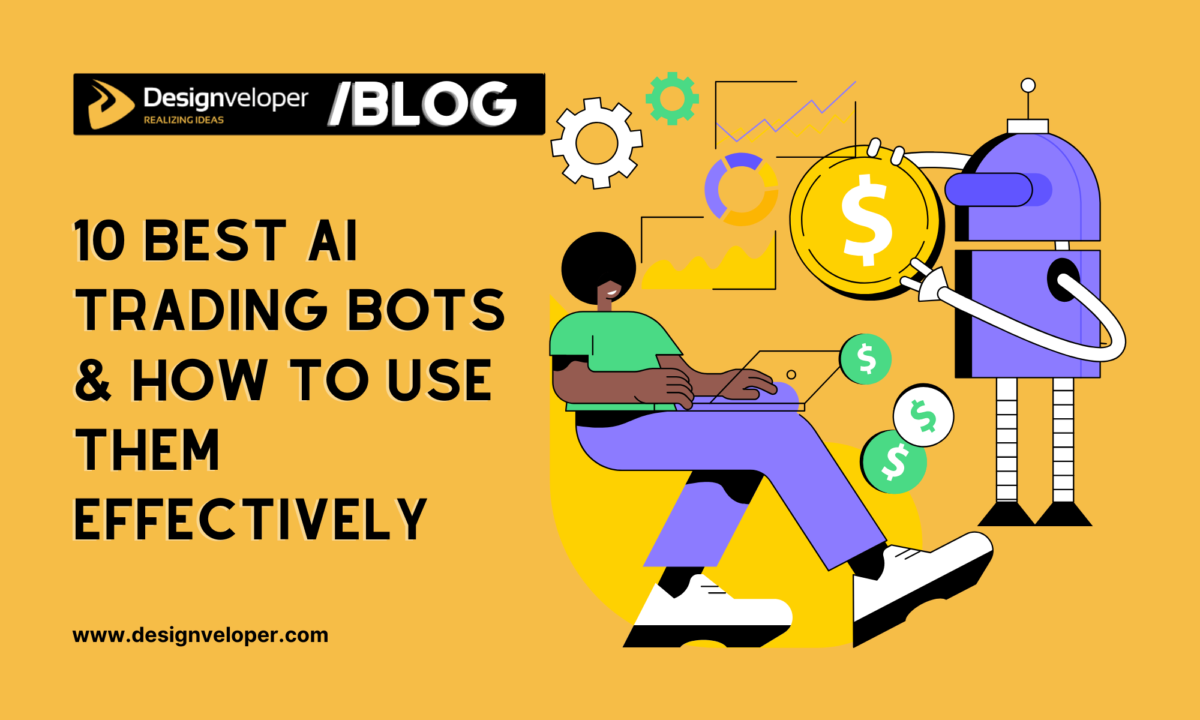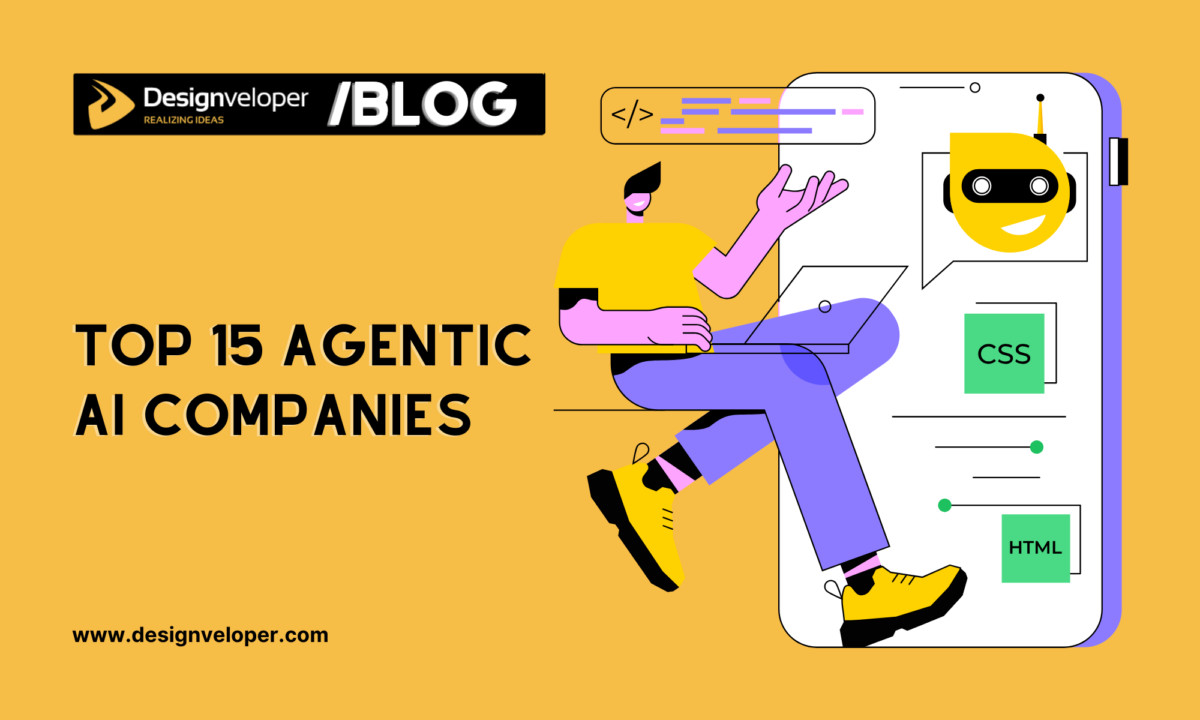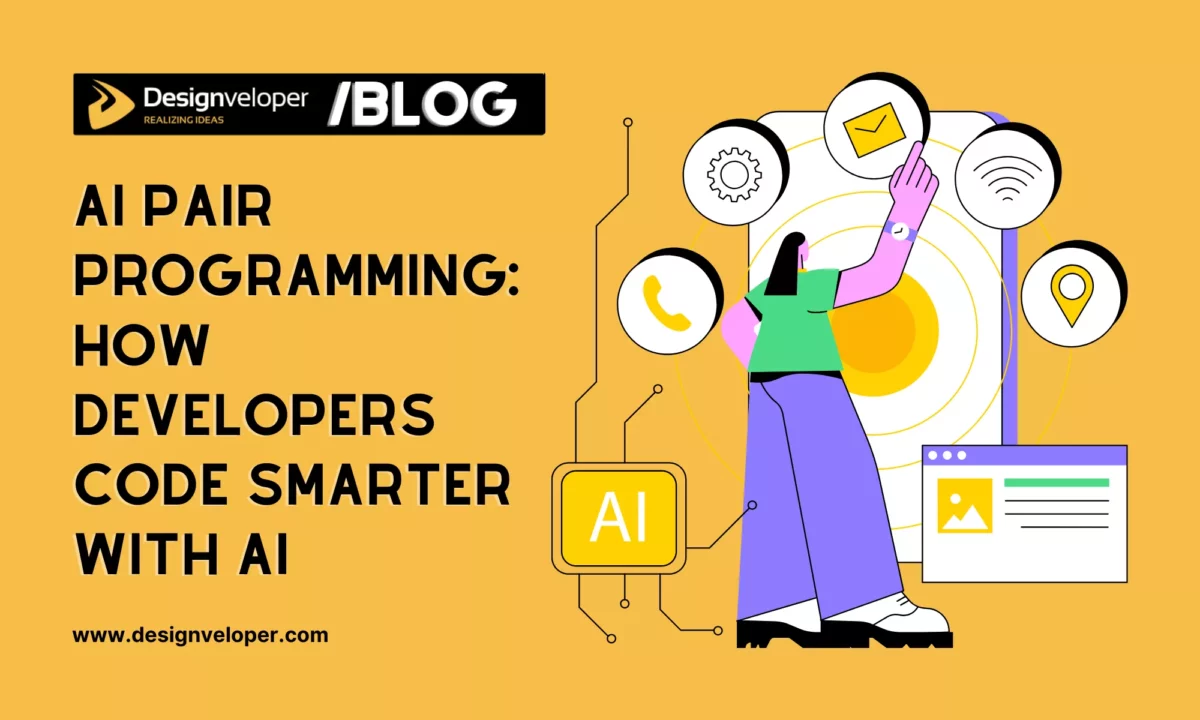22 Real Life Examples of Generative AI Applications Across Industries
October 20, 2025
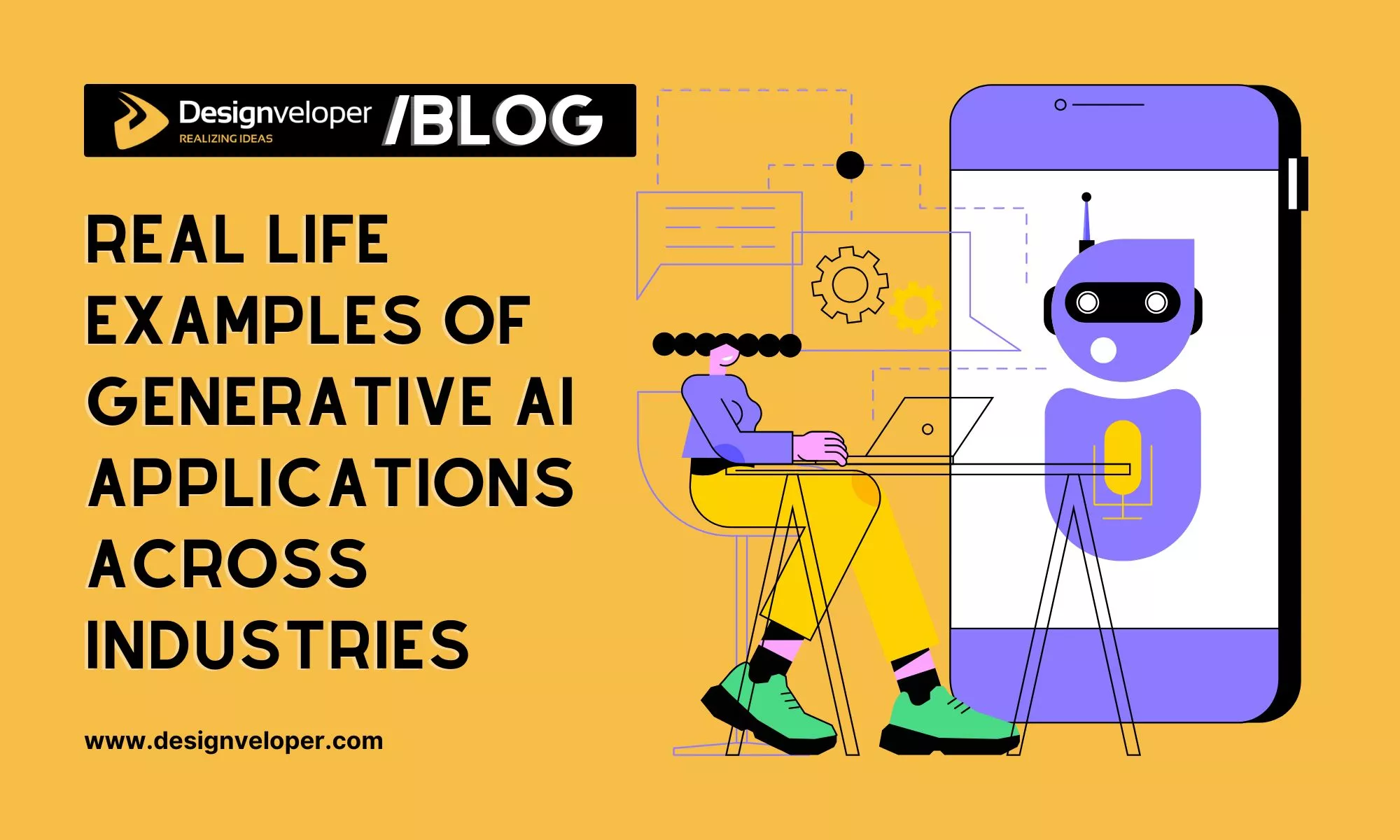

Generative AI is transforming how businesses innovate across the board. Adoption has surged – generative AI usage jumped from 33% of businesses in 2023 to 71% in 2024 – and organizations are finding creative ways to leverage this technology. These generative AI applications span everything from drug discovery to marketing content creation. Below, we’ll explore what generative AI can do and highlight 22 real-world examples across industries.

What Are the Applications of Generative AI?
Generative AI refers to algorithms (like GPT-4 or Stable Diffusion) that can create new content – code, text, images, audio, and more. Key application areas include:
- Software and Coding: AI code generators and assistants can produce code or help debug software. Developers use tools like GitHub Copilot to speed up coding tasks by generating code snippets or suggesting fixes.
- Image Generation and Manipulation: Models can create realistic images or art from text prompts. Designers use AI to generate product images, marketing graphics, or enhance photos with minimal effort.
- Video Creation: Text-to-video tools can generate short video clips from a description. This helps in prototyping ads or movie scenes – for example, Runway’s Gen-2 and OpenAI’s Sora model produce video content based on prompts.
- Audio Generation: Generative AI composes music, creates sound effects, or even clones voices. Musicians and filmmakers leverage AI tools to generate background scores or voice-overs on demand. (We’ll see an example with AIVA in entertainment.)
- Text Generation and Summarization: Perhaps the most widespread use – AI models generate human-like text. They write articles, marketing copy, emails, and summarize long documents. This boosts productivity for content creators and businesses.
- Organizational Collaboration: Companies deploy AI assistants to help with brainstorming, report writing, and analyzing documents. For instance, some enterprise chatbots search internal knowledge bases and generate answers for employees.
- Chatbot Performance Improvement: Customer service bots now use generative AI to hold more natural conversations. Instead of canned responses, they can understand queries and produce helpful answers in real-time.
- Enterprise Search: Generative AI improves knowledge management – it can search and synthesize information from corporate documents. Employees can ask an AI assistant complex questions and get concise, contextual answers.
These broad generative AI applications set the stage. Now, let’s look at real-life examples of generative AI in action across different industries.
FURTHER READING: |
1. How Much Does It Cost To Develop an AI App? |
2. LangChain: What it Is, How It Works, and How to Build LLM Apps |
3. How to Build a Chatbot with Long-Term Memory? |
Real Life Examples of Generative AI (GenAI) Applications Across Industries
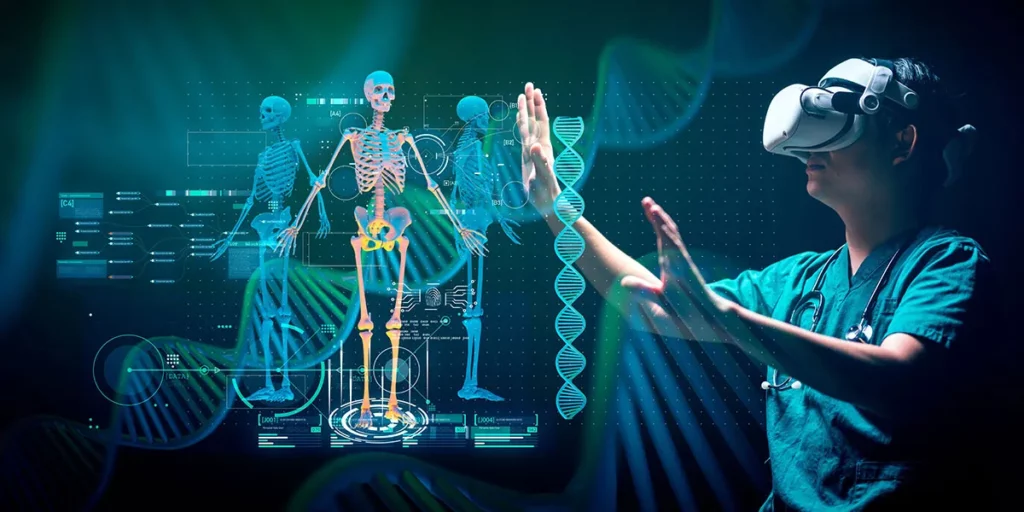
Generative AI Applications in Healthcare
1. Drug Discovery and Molecular Design
Pharmaceutical companies are using generative AI to design new drugs faster. A notable example is Insilico Medicine, which deployed generative models to identify a new drug candidate for a lung disease. The AI-designed molecule (INS018_055) went from initial target discovery to Phase I trials in under 30 months – about half the usual time – at roughly one-tenth the cost.
This first-ever AI-discovered drug is now in Phase II trials. The generative model essentially created novel molecular structures that met the desired biological and safety criteria. Pharma giants are also exploring AI: Pfizer partnered with IBM’s Watson to analyze millions of data points and suggest new immunotherapy drug targets. These examples show how generative AI is revolutionizing drug discovery by proposing candidates that scientists can then test and refine.
2. Medical Imaging and Diagnostics
Generative AI applications are enhancing medical training and diagnosis through synthetic data. Models like GANs can generate realistic medical images – X-rays, MRIs, CT scans – that help train doctors and other AI systems. For instance, an AI can create diverse examples of rare tumors or conditions so that radiologists get more practice identifying them. Research has shown that a GAN-generated set of retinal images was as effective as real images for training a diabetic retinopathy detector.
Google’s DeepMind and others are working on diffusion models that produce high-resolution 3D scans, enabling lifelike simulations of patient anatomy. These synthetic images augment datasets without risking patient privacy. In short, generative AI simulates medical scenarios – helping doctors and diagnostic algorithms learn in a safe, controlled way.
3. Patient Support and Documentation
Healthcare providers are adopting generative AI to reduce paperwork and assist patients. For example, electronic health record leader Epic Systems integrated GPT-4 into its EHR platform to help physicians with documentation. Doctors can use the AI to draft patient progress notes or summarize visit discussions automatically. In trials at hospitals, this AI medical scribe saved physicians an average of 5.5 hours per week on charting and cut after-hours documentation time by 76%. Another use is patient messaging – if a patient emails a question, the AI suggests a draft response pulling in relevant info from their chart, which the doctor can then edit. Early results show improved note quality and less burnout. Overall, these generative AI applications streamline routine clinical tasks, giving providers more time to focus on care.

Generative AI Applications in Finance
4. Fraud Detection and Risk Modeling
Financial institutions generate synthetic data with AI to strengthen fraud detection. A great example is Mastercard, which built a generative AI system to combat credit card fraud. The AI scans billions of transactions and even predicts parts of stolen card numbers, helping flag compromised cards faster. By analyzing patterns, the system doubled the detection rate of fraudulent cards and significantly reduced false alarms. Mastercard’s tech can even simulate new fraud patterns.
According to the company, “using synthetic transaction data, Mastercard can train systems to detect emerging fraud types as they crop up”. In practice, generative AI creates fake but realistic transactions to train models, making them smarter at spotting anomalies. This proactive approach improves security and saves millions by preventing scams before they cause damage.
5. Personalized Investment Advice
Wealth management firms are harnessing generative AI to assist with financial advising. Morgan Stanley, for instance, was one of the first to deploy OpenAI’s GPT-4 in its advisory workflows. They developed an internal chatbot called the “AI @ Morgan Stanley Assistant” that lets the firm’s 16,000+ financial advisors ask questions and instantly retrieve information from a vast knowledge base. Advisors use it to get tailored answers about market research or company reports while talking to clients. The result is more informed, personalized investment advice delivered faster. In fact, over 98% of Morgan Stanley advisor teams now regularly use this AI assistant. By embedding GPT-4, the bank enhanced how advisors access insights and draft communications, ultimately improving service for clients. This example shows how generative AI can act as a smart co-pilot in finance, digesting complex data into useful guidance.
6. Automated Reporting
Generative AI applications are also tackling the tedious task of financial reporting. Bloomberg built BloombergGPT, a 50-billion parameter domain-specific model, to power a range of financial NLP tasks. One use case is generating draft analyses and reports. For example, the model can summarize a 100-page SEC filing or create a first-pass earnings report in seconds – tasks that normally take analysts hours.
Automated financial report generation is becoming a reality: large language models can produce balance sheet summaries, P&L statements, or portfolio performance reports on demand. BloombergGPT was trained on years of financial data and news, giving it fluency in finance jargon. It outperforms general models on financial question-answering and sentiment analysis. While humans still review and finalize the output, this generative AI dramatically speeds up research and report writing in the finance world.
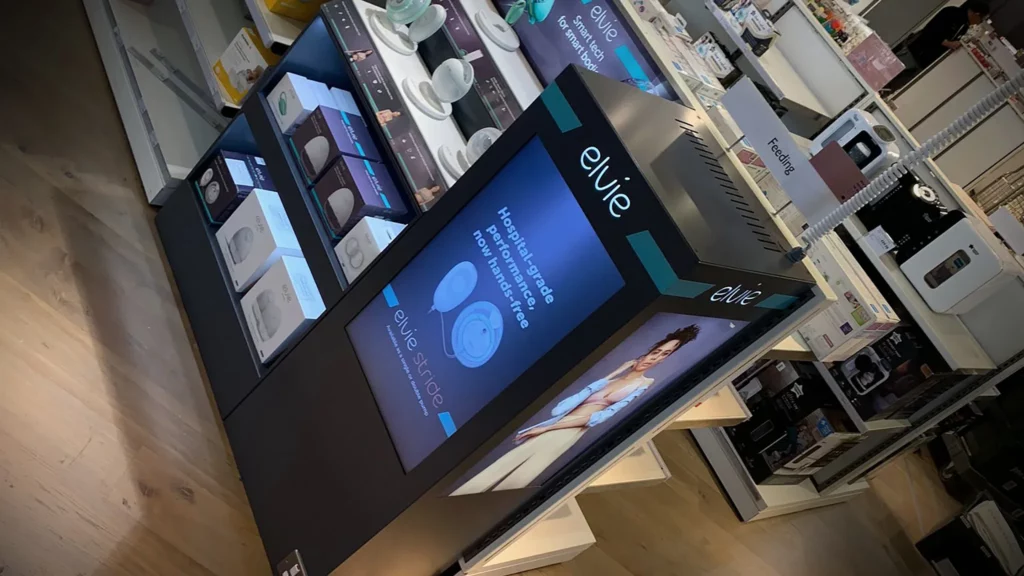
Generative AI Applications in Retail and E-Commerce
7. Product Description Generation
Online retailers are using AI to write product descriptions at scale. Shopify, for example, introduced an AI feature called Shopify Magic that auto-generates compelling product descriptions for merchants. A seller can input a few keywords about a product, and the AI will produce a polished paragraph highlighting its features and benefits. This saves entrepreneurs a ton of time and ensures every item has a well-written description. Shopify Magic launched in April 2023 and creates descriptions “in seconds”.
Early users found it boosts SEO and conversions by populating their catalogs with high-quality text. Similarly, Amazon has experimented with generative AI to improve product content. Amazon’s system can rewrite and personalize product titles or blurbs on the fly based on the shopper. For instance, if a customer frequently searches for “gluten-free” foods, the AI will highlight “gluten-free” prominently in relevant product titles they see. These examples show how generative AI can populate e-commerce sites with richer, tailored content with minimal human effort.
8. Personalized Recommendations
Retailers have long used algorithms for recommendations, but generative AI is taking personalization up a notch. Amazon recently announced it’s leveraging generative AI to make product recommendations and search results more individually relevant. Rather than generic “Customers also bought…” lists, the AI analyzes each shopper’s behavior and dynamically generates recommendation carousels like “Gift boxes in time for Mother’s Day” or “Cool deals to improve your golf game,” tuned to that user. It even personalizes product descriptions: in a search, if a certain spec matters to you, the AI will surface that detail in the snippet you see. This makes it much faster for customers to find the right product.
Generative AI essentially acts as a real-time merchandising assistant, re-writing and re-ordering content to match each user’s intent. Amazon’s early results show more engagement when shoppers feel the site is “speaking their language.” Personalized, AI-curated shopping experiences are becoming the norm.
9. Virtual Try-On and Synthetic Imagery
Fashion retailers are tapping generative tech to let customers “try on” products virtually. Zalando, for example, has piloted an AI-powered virtual fitting room. Customers create a 3D avatar of themselves by inputting body measurements, and the system generates realistic images of how different sizes of an outfit would look on that avatar. Behind the scenes, computer vision and generative models predict how the clothing drapes and create the try-on images. Over 30,000 Zalando customers have tested this, and about half try more than one size on their avatar – indicating they’re finding the feature useful.
The company reports increased engagement as shoppers play with the tool. Similarly, generative AI can produce synthetic catalog photos (like a couch in various room styles or a sneaker on different backgrounds) without expensive photoshoots. Overall, these applications build buyer confidence by letting people visualize products realistically online, reducing the gap between e-commerce and in-store experience.

Generative AI Applications in Marketing and Advertising
10. Content Creation
Marketers are embracing generative AI applications to produce written and visual content faster. HubSpot integrated an AI Content Assistant into its marketing platform, which can draft blog posts, social media captions, or marketing emails given a prompt. For example, a marketer could say “Write an email promoting our winter sale” and get a polished draft to refine. This saves time on first drafts and helps overcome writer’s block. In practice, 63% of marketers using gen AI say it makes their content creation more efficient.
Another popular tool is Jasper AI, which many companies use to generate marketing copy. Jasper can take a long-form article or product info and “transform your long-form content into collateral for any channel… from emails and ads to landing pages and blogs, tailored and optimized at scale within seconds,” says Jasper’s marketing VP. In other words, Jasper repurposes content into multiple formats instantly. These tools still require human editing (most marketers edit AI text before publishing), but they significantly accelerate the process of creating engaging campaigns.
11. Image and Video Generation
Generative AI applications are enabling creative advertising content that would have been costly or impossible before. A prime example is Coca-Cola’s marketing teams using image and video generators. In 2023, Coca-Cola partnered with OpenAI and Bain to infuse generative AI into its campaigns. They launched the “Create Real Magic” contest where fans used DALL·E (OpenAI’s image model) to generate artwork with Coke’s iconic logos. The result was thousands of unique user-generated ads. Coca-Cola also produced an AI-driven video ad called “Masterpiece” that used Stable Diffusion (a text-to-image model) to animate famous paintings coming to life and handing a Coke bottle – blending live action with AI-generated art in each frame.
The campaign was so realistic many viewers didn’t realize AI was involved. Coca-Cola’s generative AI lead noted that using Stable Diffusion brought a level of “perfection” and creative flexibility under tight timelines. These examples show how generative AI unlocks new creative possibilities in advertising – enabling eye-catching visuals and video content crafted partly by algorithms.
12. Customer Engagement
Brands are also deploying generative AI chatbots to better engage customers. KLM Royal Dutch Airlines was an early adopter – it introduced a customer service chatbot (called BlueBot) on channels like Facebook Messenger that uses AI to answer common passenger questions. Initially rule-based, KLM’s bot has evolved with generative models to handle more complex, conversational queries. It can help you find flights, provide travel updates, or rebook a ticket in a human-like manner.
KLM reported that their AI chatbot now automatically handles over 50% of customer inquiries on social media without human intervention. By learning from a vast archive of past Q&A, the bot generates helpful answers on the fly instead of relying solely on pre-scripted responses. This 24/7 virtual assistant improves response times and consistency in service. Many other companies have followed suit – from bank chatbots that can explain credit card charges, to fast-food bots that take orders via chat. Generative AI applications allow these bots to understand nuanced requests and generate friendly, informative replies, leading to smoother customer experiences.

Generative AI Applications in Education
13. Intelligent Tutoring Systems
Education platforms are using generative AI applications to act as personalized tutors. A standout example is Duolingo Max, the premium subscription tier of the popular language learning app Duolingo. Duolingo Max is powered by GPT-4 and introduced two major AI features: “Roleplay”, where learners can have interactive conversations with an AI character in the language they’re learning, and “Explain My Answer”, where the AI breaks down grammar or tells you why you got something wrong. This provides on-the-spot tutoring that was previously only possible with a human teacher. For instance, a French learner can role-play ordering coffee with the AI waitress and get corrections in real time, or ask the AI to explain French past tense after making a mistake. GPT-4’s advanced understanding allows it to generate virtually endless realistic practice scenarios and give contextual feedback.
The results have been very positive – users get a deeper understanding through conversation practice and seem to stay more motivated. Duolingo’s team noted that GPT-4 finally made this level of conversational immersion possible after earlier AI models fell short. It’s like having a patient, always-available tutor in your pocket.
14. Content Generation for Courses
Online learning providers are using generative AI applications to help create curriculum and assessments. Coursera, a major e-learning platform, launched AI-assisted course-building tools for instructors. One feature is an “AI Assessment Generator” that automatically creates quiz questions and practice problems based on course material. An instructor can feed a chapter or some lecture notes into the system, and the AI will suggest diverse multiple-choice questions, fill-in-the-blanks, even math problems – all tailored to that content. This saves educators countless hours in crafting assessments from scratch. The AI can also generate variations of questions to thwart cheating and test deeper understanding. Coursera is additionally piloting a Coursera Coach chatbot for students: an AI tutor that can answer questions about the course, provide chapter summaries, and give study tips in a conversational way.
Essentially, if a student is stuck on a concept at midnight, they can ask the AI coach for help rather than waiting to email a professor. By leveraging generative AI in course design and delivery, Coursera aims to personalize learning at scale – creating content and support dynamically to fit each learner’s needs.
15. Language Learning Apps
Beyond formal courses, generative AI is making its way into study tools and flashcard apps. Quizlet, which millions of students use for memorization and practice, launched Q-Chat – an AI tutor built on OpenAI’s ChatGPT API. Q-Chat interacts with students through a Socratic dialogue: it asks you questions, tailors difficulty based on your responses, and explains concepts in a chat format. For example, if you’re learning Spanish vocabulary, Q-Chat might quiz you, then create a short story using your vocab words, asking you comprehension questions along the way. It leverages Quizlet’s huge library of flashcard data and can converse on any subject a student is studying. Quizlet collaborated with OpenAI early, and by 2023 it became the first education platform to integrate ChatGPT at scale.
The outcome is a fully adaptive, personalized learning buddy. Students have reported that it makes studying more engaging – it’s like practicing with a knowledgeable friend rather than rote memorization. As generative AI improves, we can expect every language or skill app to have an AI chat mode for immersive practice and Q&A.
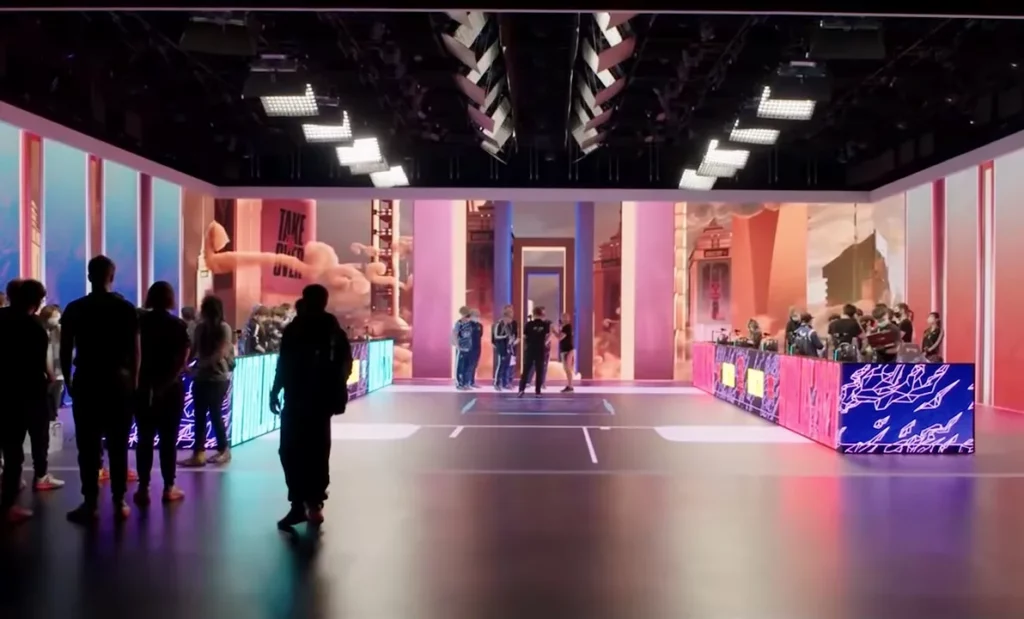
Generative AI Applications in Entertainment and Media
16. Gaming
Generative AI applications are set to revolutionize video games by making NPCs (non-player characters) far more realistic and dynamic. NVIDIA’s Avatar Cloud Engine (ACE) is a toolkit that allows game developers to create AI-powered characters that can engage in unscripted conversations and behaviors. Traditionally, game NPCs follow preset dialogue trees and simple patterns. With ACE, developers can give NPCs a generative language model for dialogue, plus other AI models for perception and planning. The result: NPCs that “think” and respond on the fly.
For example, an AI shopkeeper in a game could understand a player’s typed question and generate a unique response (“We’re out of elixirs today, try again tomorrow – by the way, I heard goblins are near the town gate!”) instead of repeating one of five recorded lines. NVIDIA demonstrated this with a tech demo where an NPC character had a natural voice conversation with the player – a glimpse of the future.
Beyond dialogue, generative AI allows game AI to learn and adapt. A forthcoming MMORPG boss powered by ACE will learn from players’ tactics and change its strategy in future encounters, meaning each boss fight will feel fresh. In summary, generative AI is making game characters more human-like: they can carry on conversations, offer strategic suggestions, and exhibit behaviors that aren’t scripted, leading to more immersive gameplay.
17. Music and Art
Generative AI has become a creative partner in music and visual arts. On the music side, an AI called AIVA (Artificial Intelligence Virtual Artist) composes original scores. AIVA was trained on thousands of classical pieces and film scores, and it can generate new compositions in various styles. Notably, AIVA composed a piece titled “I Am AI” that was performed at NVIDIA’s GTC conference in 2017. It has also created soundtracks for games and commercials. Users can give AIVA a mood or genre (say, “uplifting orchestral”) and it produces a complete piece with melodies and instrumentation. In the visual arts, tools like Stable Diffusion have empowered artists to generate stunning artwork from a simple text description. Stable Diffusion is an open-source text-to-image model that anyone can run. Artists and designers use it to brainstorm concepts – for example, generating dozens of logo ideas or concept art scenes to iterate on.
Even big brands have utilized it: Coca-Cola’s recent “Y3000” campaign introduced a futuristic beverage co-created with AI, and they used Stable Diffusion to generate AR visuals for its promotion. In practice, the marketing team fed the model prompts about future societies, and it produced the imaginative artwork used on the cans and ads. Generative AI doesn’t replace human creators, but it offers a new wellspring of inspiration and content. Musicians get infinite melodies to tweak; illustrators get instant drafts of ideas to build on. It’s like a supercharged creative assistant that never runs out of ideas.
18. Film and Video Production
In filmmaking and media production, generative AI applications are starting to handle tedious tasks and unlock new visual effects. Runway Gen-2 is a text-to-video tool that can generate short video clips or animations from a description – for instance, “a sunset over a mountain range, in the style of watercolor.” Filmmakers have used Runway to create placeholder B-roll footage or background scenes without needing to shoot them.
Meanwhile, OpenAI’s research model Sora pushes the envelope by generating up to 60-second videos with multiple scenes and camera movements purely from text prompts. Imagine writing “A spaceship lands in Times Square at night, crowd gathers” and getting a rough video depicting it. These tools are still emerging, but they hint at a future where content creators can conjure entire storyboards with AI. Even now, generative AI aids post-production: you can de-age actors or alter a scene by having AI generate the adjusted visuals frame by frame.
For example, a recently released tool can take an filmed scene and change the time of day or weather by generating the modified frames (turning a daytime shot into a rainy night, etc.). Production houses are also experimenting with AI to clean up audio, generate voice lines (with voice actors’ permission) for minor dialogues, and create quick previews of scenes before investing in full production. In summary, generative AI in film is like having an infinite library of stock footage, a visual effects team, and an animation studio on standby – it helps filmmakers test ideas and even produce content that would be impractical to film traditionally.
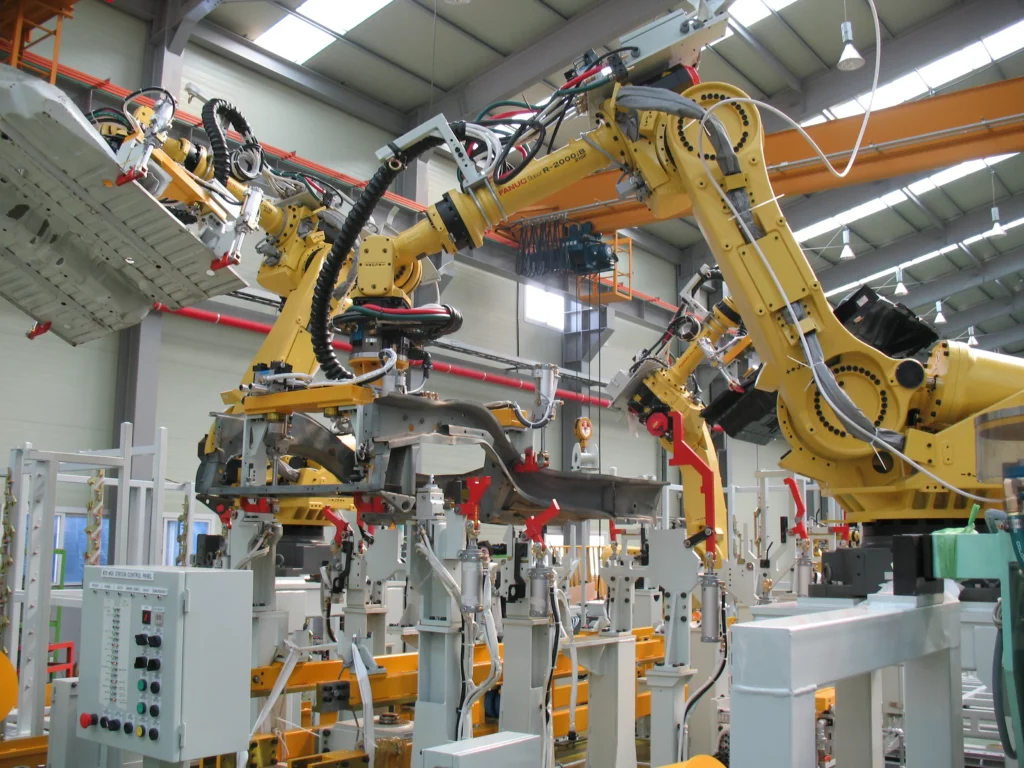
Generative AI Applications in Manufacturing and Logistics
19. Synthetic Data for Simulations
Manufacturing firms use generative AI applications to improve simulations and digital twins of their operations. A digital twin is a virtual model of a factory or system that you can run simulations on. Generative AI enhances this by creating realistic synthetic sensor data and scenarios to test with. For example, Siemens integrates generative models with its digital factory simulations to model edge cases (like a sudden machine failure or a surge in product demand) that haven’t actually occurred yet. The AI essentially imagines plausible scenarios and produces data for them. This helps engineers see how production lines would respond and find optimal configurations.
According to industry experts, “Generative AI can improve digital twins by creating realistic synthetic data, optimizing model parameters, and enabling real-time simulations.” In practice, that means a manufacturing simulation isn’t limited by past recorded data – the AI can generate new conditions (say, simulating 10 years of wear on a robot arm) and the digital twin can predict problems before they happen. Logistics companies similarly use AI to simulate supply chain disruptions by generating hypothetical events (like port closures, spikes in fuel cost) and planning around them. By augmenting simulations with generative synthetic data, companies can achieve more robust and efficient operations, since they’ve virtually “rehearsed” many situations in advance.
20. Predictive Maintenance
Generative AI applications also contribute to predictive maintenance in industries like aerospace and energy. GE Aviation (now GE Aerospace), for instance, applies AI to monitor jet engines and predict when they will need maintenance. The engines stream sensor data (vibration, temperature, pressure readings). AI models analyze this and can generate the likely progression of wear and tear, effectively forecasting future engine states. GE’s systems flag subtle anomaly patterns that human engineers might miss, allowing maintenance to be done proactively. The company says it uses AI for everything from engine part inspections (identifying tiny cracks via image analysis) to “delivering insights that enable predictive maintenance”. In one case, GE’s AI predicted an issue with compressor blades well before scheduled maintenance – preventing an in-service failure.
We can think of generative AI here as scenario generation: it can simulate (“generate”) the remaining useful life of a component under various conditions. In energy grids, similar AI models generate load and failure scenarios to schedule pre-emptive repairs of transformers. The impact is a big reduction in unplanned downtime. GE reported that AI-driven predictive maintenance, combined with digital twins, has reduced inspection times and improved accuracy in finding issues. In summary, generative AI helps machines tell us in advance when they’ll break, by learning their behavior and projecting it forward – so technicians can fix things at the optimal time.
21. 3D Design and Prototyping
Product designers and engineers use generative AI applications to rapidly design and prototype new parts. A famous example is Autodesk’s generative design capabilities in software like Fusion 360. Engineers can input design goals (e.g. “a chair that supports 300 lbs, minimize weight, use aluminum”) and the generative AI will algorithmically produce dozens or hundreds of design alternatives that meet those criteria. It might output a chair design with a novel lattice structure that a human might never have conceived. Companies like Airbus and GM have used Autodesk’s generative AI to design parts that are both stronger and lighter than legacy designs – saving material costs and improving performance.
In one case, Airbus designed a partition for aircraft using generative design that mimicked cellular structures; it came out 45% lighter than the original while passing all strength tests. The AI essentially created an optimized geometry after evaluating thousands of possibilities. This approach dramatically speeds up prototyping: rather than manually iterating through each design tweak, engineers let the AI explore the “design space” and propose the best options. They can then 3D-print the top AI-generated designs to test in the real world. Generative design isn’t limited to mechanical parts – architects use it to design building layouts and materials, and consumer product designers use it for everything from sneakers to furniture. By automating the creative exploration, generative AI allows humans to focus on refining and implementing the most promising designs, cutting development cycles from months to days.
22. Logistics Route Optimization
In logistics and supply chain management, generative AI is helping to optimize routing and scheduling. For instance, some freight companies use generative models to simulate countless shipping routes and delivery schedules under varying conditions (traffic, weather, delivery windows) – essentially generating alternative logistics plans. The AI then identifies the most efficient routes that meet all constraints. This is like having a thousand planners working in parallel brainstorming different ways to move goods.
One real-life application is in last-mile delivery for e-commerce: AI can generate and evaluate many drop-off sequences for a delivery truck and pick the one that minimizes driving time and fuel. UPS’s famous ORION system, which optimizes driver routes, is incorporating AI techniques to dynamically adjust routes during the day. And companies like FedEx are piloting generative AI to predict and reroute packages if disruptions occur (the AI can generate scenarios such as “what if a sorting facility goes down – how to reroute?”). The benefit is higher on-time delivery rates and lower costs. In warehouses, generative AI applications help with layout planning by simulating product pick scenarios and optimizing where to store items for fastest retrieval. Overall, by generating and testing many what-if scenarios, AI finds solutions that human planners might overlook, making logistics networks more adaptive and efficient.
Conclusion
Generative AI is no longer just a lab curiosity – it’s driving tangible improvements across industries. From discovering new medicines to personalizing online shopping, generative AI applications are delivering speed, efficiency, and creativity gains in real life. Businesses that leverage these AI innovations (while addressing their limitations and ethical considerations) stand to benefit from a significant competitive edge.
At Designveloper, we’ve been helping businesses embrace innovation since 2013. As one of Vietnam’s top web and software development companies, we understand what it takes to turn emerging technologies like generative AI into real-world solutions that drive value.
As a trusted partner, we offer end-to-end services: from AI strategy consulting and system architecture to model fine-tuning and scalable deployment. Whether you’re exploring text generation, AI search, automated design systems, or customer-facing chatbots, we can help you build it with confidence.






Read more topics
You may also like















